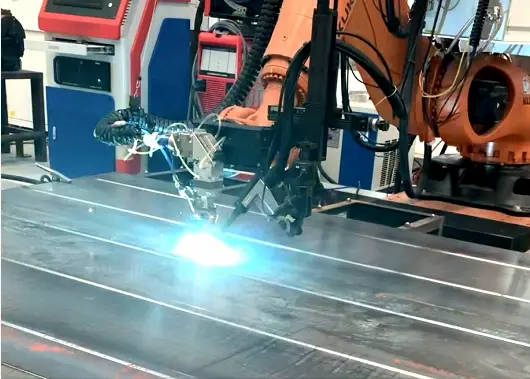La soldadura por láser es una precisa y eficiente proceso de soldadura que utiliza un concentrado de rayo láser para unirse a los metales o termoplásticos. Esta técnica avanzada que ofrece una alta velocidad de soldadura con un mínimo de distorsión, lo que es una opción preferida en diversas industrias, incluyendo la automotriz, aeroespacial, electrónica y manufactura de dispositivos médicos.
El Origen de Soldadura Láser
Los orígenes de la soldadura láser se puede remontar de nuevo a principios de los años 1960, a raíz de la invención del láser en sí. Inicialmente desarrollado para aplicaciones científicas e industriales, la tecnología láser rápidamente encontró su camino en la soldadura debido a su capacidad para entregar calor intenso con una precisión milimétrica. Durante décadas, los avances en la tecnología láser, que continuamente han mejorado las capacidades y aplicaciones de la soldadura por láser.
¿Cómo Funciona El Láser De Soldadura De Trabajo?
Soldadura láser funciona enfocando un láser de alta intensidad del haz en los materiales a unir. El rayo láser calienta y se funde el material en el área de orientación, la creación de un fundido de la piscina. A medida que el láser se mueve a lo largo de la articulación, el material fundido se solidifica, formando una fuerte y precisa de la soldadura. El proceso se puede controlar con gran precisión, lo que permite intrincado y soldaduras de alta calidad.
El Principio de funcionamiento de las Máquinas de Soldadura por Láser
El principio básico de la soldadura por láser de las máquinas se basa en la densidad de alta energía de los láseres. Un láser genera una brillante direccional del haz, que se centra en una pequeña área de sistemas ópticos. Cuando este rayo golpea la superficie de la pieza de trabajo, la alta energía al instante se funde el material de la superficie, formando una localizados de alta temperatura de fundido de la piscina. Precisamente por el control del láser duración y distribución de la energía, fuerte y soldaduras de alta calidad se crean.
Conversión de energía y el Proceso de Transferencia
La soldadura láser se inicia con el láser que genera un haz que es transmitido a través de un camino óptico y se centró en una pequeña mancha. El material absorbe la energía del láser y la convierte en calor. Esto aumenta rápidamente la temperatura local, causando el derretimiento o incluso la vaporización. Los materiales fundidos mezcla y se solidifican al enfriarse, formando una soldadura.
Modos de soldadura y Control de
Soldadura láser consiste en varios modos, como onda continua y pulsada ola de soldadura. El ajuste de parámetros como la potencia del láser, el ancho de pulso y la frecuencia permite la adaptación a diferentes materiales de soldadura y necesidades. Gases protectores se utilizan a menudo para evitar la oxidación y garantizar la calidad de la soldadura.
Tipos de Soldadura Láser
1. La Conducción De Calor De La Soldadura
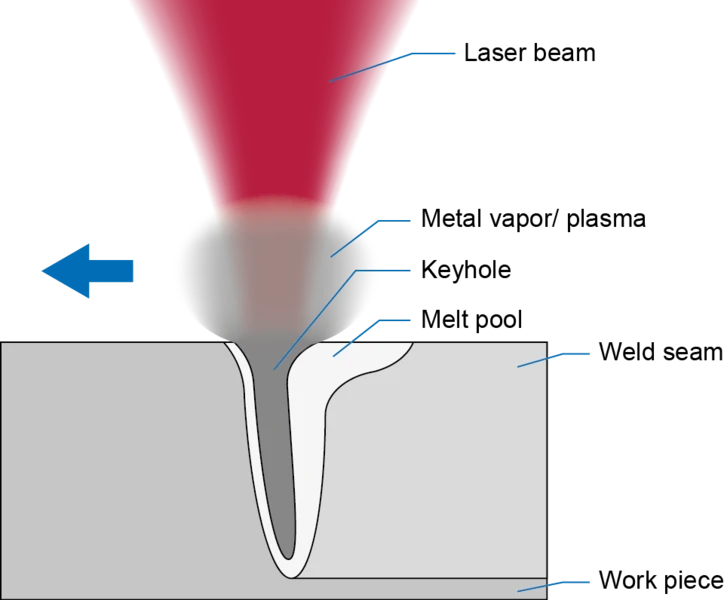
La conducción de calor de la soldadura es una técnica de soldadura láser se utiliza para materiales delgados y piezas pequeñas. El rayo láser calienta la superficie del material, y el calor se propaga hacia el interior a través de la conducción, de fusión del material en el área de la articulación. Esto crea un poco de fundición de la piscina que se solidifica a medida que el láser se mueve formando una soldadura. Este método es ideal para la soldadura de materiales de alrededor de 1 mm de espesor, ya que se basa en el calentamiento de la superficie y la profundidad de la penetración.
2. Láser De Penetración Profunda/Ojo De La Cerradura De La Soldadura
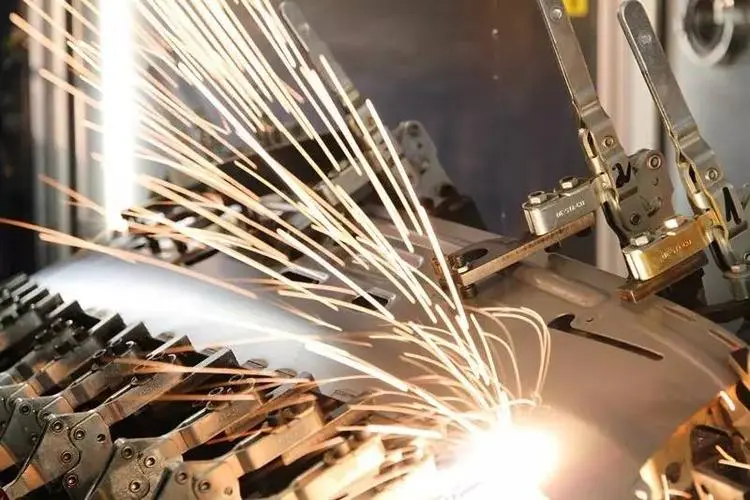
Láser de profundidad de penetración de la soldadura se utiliza un láser de alta energía del haz rápidamente el calor y localmente fundir la pieza de trabajo, la creación de una fuerte y precisa de soldadura con un mínimo de zona afectada por el calor. Este método es eficiente, preciso y adaptable a varios metales y espesores, por lo que es ideal para industrias como la aeroespacial y la industria de automoción.
3. Láser-Arco De Soldadura Híbrida
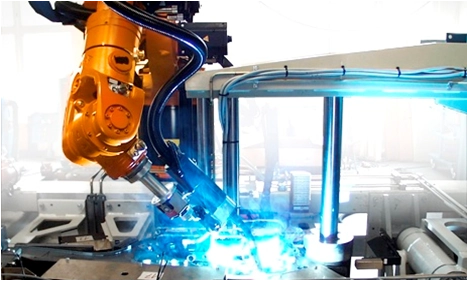
Láser-arco híbrido de soldadura combina la alta densidad de energía y la precisión de un láser con la eficiencia y el costo-efectividad de la soldadura de arco, lo que resulta en un versátil, estable y eficiente método de soldadura con amplias perspectivas de aplicación.
4.Plasma Láser Coaxial Híbrido De Soldadura
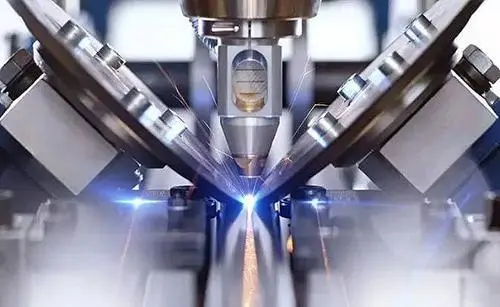
Plasma láser coaxial híbrido de soldadura combina láser y plasma, soldadura por arco para crear una alta densidad de energía de la fuente de calor para la soldadura de metales diferentes materiales. Esta tecnología aprovecha las ventajas del láser y la soldadura por plasma, mientras que la superación de sus limitaciones individuales. Reduce la tensión residual y la porosidad de soldadura defectos típicamente asociados con la soldadura láser y las direcciones de las ineficiencias y las grandes deformaciones térmicas común en el plasma soldadura por arco.
¿Qué tipos de Láseres que Se Utilizan en la Soldadura por Láser?
Varios tipos de láseres que se utilizan en la soldadura por láser, cada uno de ellos ofrece ventajas únicas. Los tipos más comunes incluyen:
1. Los Láseres de CO2:
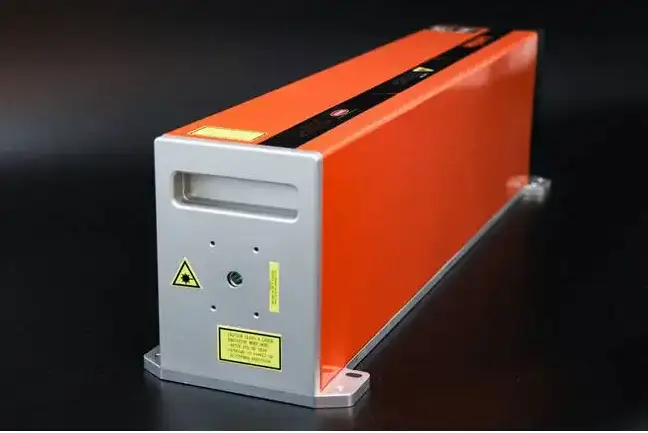
Los láseres de CO2 son ampliamente utilizados láseres industriales para corte, grabado, y la soldadura de metales y materiales no metálicos. Ofrecen una excelente calidad de haz, un pequeño haz de diámetro, distribución uniforme de la energía, y alta densidad de potencia. Los láseres de CO2 son conocidos por su adaptabilidad y estabilidad, a pesar de que consumen una cantidad significativa de energía y son relativamente grandes en tamaño.
2. Los Láseres De Fibra:
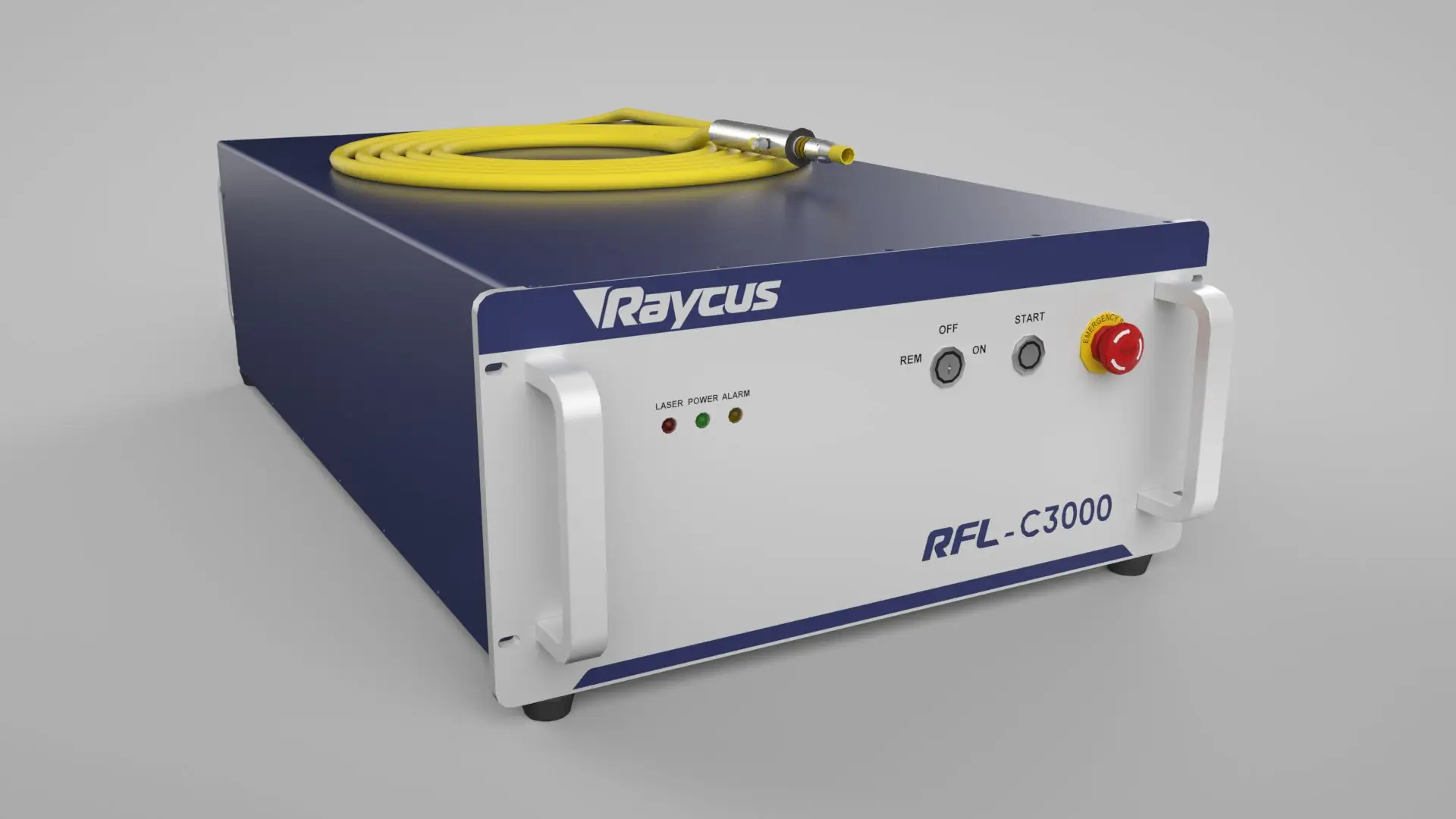
Los láseres de fibra el uso de la fibra óptica como medio de transmisión, haciendo de ellos compactas, de gran densidad de potencia, la energía eficiente y altamente flexible. Son una opción superior en campos como las comunicaciones y el procesamiento de materiales. Ventajas de los láseres de fibra de alta densidad de potencia, excelente calidad de haz, estable vías ópticas, y larga vida de servicio. Ellos también son adecuados para la soldadura y el procesamiento de materiales metálicos como el acero, el cobre, el aluminio y el acero inoxidable.
3. Nd:YAG (dopados con Neodimio Granate de Itrio y Aluminio) Láseres:
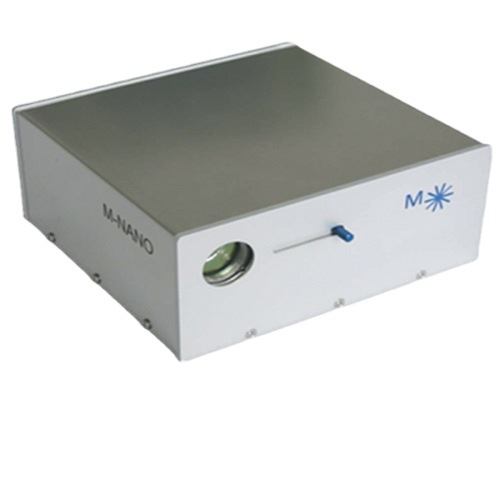
Los láseres de Nd son láseres de estado sólido con una longitud de onda de 1.064 micrómetros. Ellos tienen un pequeño diámetro de spot y la luz alta densidad de energía, que los hace aptos para el trabajo detallado en las superficies de materiales y componentes pequeños. Nd asers son ampliamente utilizados en soldadura, corte, marcado, y el tratamiento de la superficie de las aplicaciones.
4. Láseres Semiconductores:
![]()
Láseres semiconductores o diodos láser, el uso de materiales semiconductores como el medio de ganancia. Son compactas, muy eficiente y costo-efectiva. Conocida por la alta densidad de energía y tiempos de respuesta rápidos, son ideales para las telecomunicaciones, almacenamiento de datos, dispositivos médicos, y el procesamiento de materiales.
6. Los Láseres De Femtosegundo:
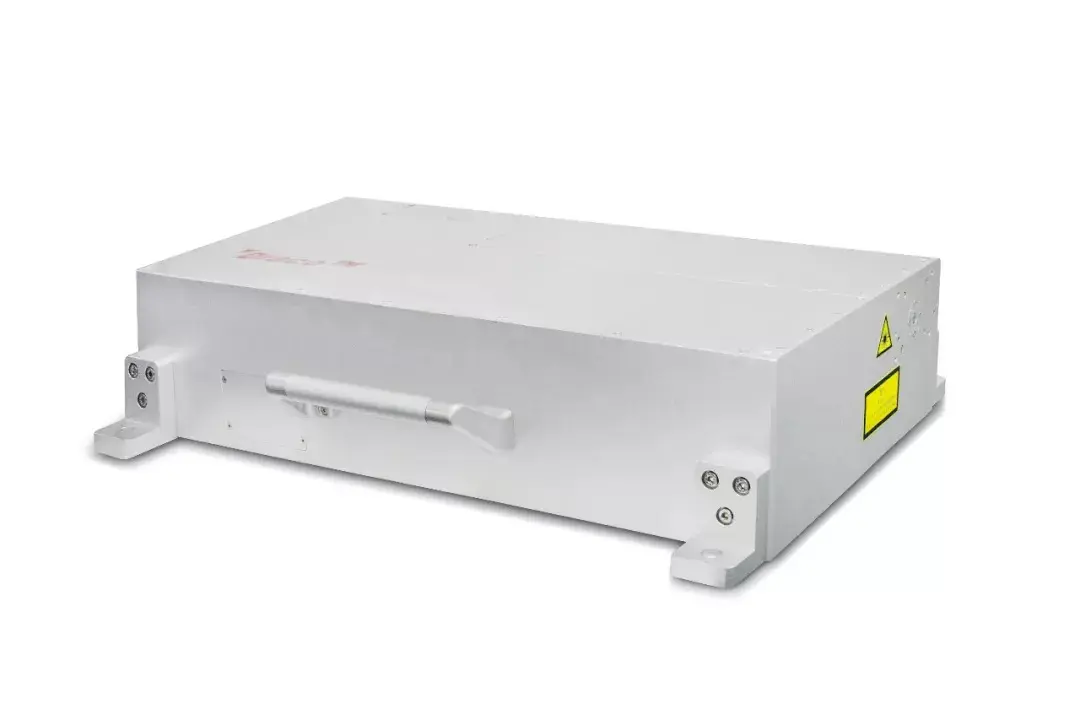
Los láseres de femtosegundo producir ultra-cortos impulsos que dura sólo unos pocos femtosegundos (una trillonésima de segundo). Estos láseres ofrecen una precisión extremadamente alta y la densidad de energía, lo que les hace ideales para aplicaciones que requieren un mínimo de calor de impacto y de alta precisión, tales como micromecanizado, médico de la cirugía, y la investigación científica.
Tipos de Láser de las Máquinas de Soldadura
Siguientes son algunos de los tipos más comunes de soldadura por láser máquinas:
- Láser Automático De Las Máquinas De Soldadura: Integrado con automatizada de sistemas robóticos de alta precisión y de soldadura continua. Ideal para la producción industrial a gran escala.
- La Transmisión De Fibra Láser De Las Máquinas De Soldadura: Uso de fibra óptica flexible de transmisión y la operación remota. Adecuado para espacios confinados o de larga distancia de las operaciones.
- Galvo De Escaneo Láser De Las Máquinas De Soldadura: El uso de alta velocidad de escaneo para una soldadura precisa, ideal para lotes de soldadura de precisión productos como la electrónica y los dispositivos médicos.
- De Mano Láser De Las Máquinas De Soldadura: Ligero y flexible, adecuado para el funcionamiento de un sitio en construcción, decoración y mantenimiento de industrias.
Láser De Las Aplicaciones De Soldadura
La soldadura láser es utilizado en diversas aplicaciones a través de múltiples industrias, incluyendo:
- Industria Automotriz: Para la soldadura de chapas de carrocería, componentes de la transmisión, y sistemas de escape.
- Industria Aeroespacial: Para la unión de componentes de aeronaves, los álabes de una turbina, y los tanques de combustible.
- La Industria De La Electrónica: Para la soldadura de dispositivos microelectrónicos, sensores y conectores.
- De Manufactura De Dispositivos Médicos: Para soldaduras de precisión de los instrumentos quirúrgicos, implantes e instrumentos médicos.
- La Fabricación De Joyas: Para crear intrincados y delicados soldaduras de metales preciosos.
La comprensión de cómo láser trabajos de soldadura y sus diversos tipos pueden ayudar a las industrias de elegir el método adecuado para sus necesidades específicas, conduce a la mejora de la calidad del producto y la eficiencia de fabricación.
